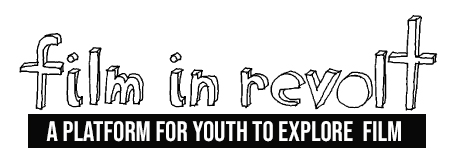Australian Director Selina Miles’ Martha: A Picture Story (2019) documents the life and photographic work of photojournalist and independent/freelance photographer Martha’ Marty’ Cooper. This film brings great insight into the work and socio-cultural impact of Cooper’s work, particularly regarding underground social movements largely in Japan, New York City, Baltimore and Berlin. Miles’ Martha: A Picture Story documents with emotion, Martha’s personal struggles and adventures and notably her influence among street artists and the changing landscape of the heavily globalised and commercialised street art movement in a contemporary 21st century, technologically driven society.
Miles effectively incorporates archival video footage, Cooper’s energised photographs and a plethora of insightful interviews with a large portion of street artists including prominent New York based artists as well as with the highly emotive engagement with Brazilian street artists, OSGEMEOS who articulate the influence of Cooper, particularly in regard to the international development of street art and the diversity of its global culture both in identity and practice. Screening at this year’s Tribeca Film Festival and winning the Sydney Film Festival’s Audience Award for Best Documentary, this film explores the vitality and photographic talent of Cooper, which has evidenced its ability to resonate with audiences widely.
The film opens with Cooper in preparation to shoot the nocturnal street art project of Berlin collective 1Up Crew, breaking into the Heinrich-Heine-Straße metro in Berlin, resourcefully utilising fire extinguishers, notably rendering a warped smiley face over the train tile. Cooper amidst the high-speed endeavour photographs the subway art deemed vandalism, due to its illegality, further intensifying the practice. Cooper at the age of 76 continues to collaborate with contemporary street artists, upon an international scale, broadening her oeuvre and presenting herself as one encapsulated and inspired by action and adventure, interlinked with street art and photography.
Cooper’s documentation of the work of traditional Japanese tattooist Horibun I, initially an underground art form particularly in the 1970s, was particularly influential and is chronicled in Tokyo Tattoo 1970 (2011). Martha’s curiosity and exploration of this covert scene functioned as the preamble to her initial decade-long exploration of New York City’s street and subway art culture.
Cooper’s engagement with New York City’s street art scene primarily emerged from her curiosity with the communities and individuals living in poverty, particularly in the burning Bronx, an area overlooked and malnourished, loathed and demonised for its high crime rates and the predominantly low socio-economic status of its populous. Cooper explored regions such as Alphabet City and the South Bronx, culturally rich centres which functioned to express the multidimensional character of New York’s most neglected districts.
“They [NYC Government and the wider population] hated graffiti so much that they just couldn’t see through to the fact that it might be worthy of study.” (Cooper via Martha: A Picture Story)
Subway and street art in its original form functioned as a means of communication, a means of escaping one’s social status and its implications. Cooper was significantly interested in how particularly the youth of the city’s distinctive boroughs would entertain themselves and how they would construct makeshift toys from the city’s debris, as documented in Martha’s Street Play (2006). The creativity of the youth exposed their ability to transcend their socio-cultural restrictions.
Cooper, two years after first moving to Alphabet City, began working with the New York Post (1977-1980), she significantly obtained the role as the publication’s first female staff photographer. Cooper’s discovery of New York City’s kinetic yet clandestine subcultures, as found in- between official assignments, when Cooper was otherwise engaged in her search for generic, filler’ weather shots’ for the publication. Eventually, Cooper discovered the youth-driven culture of the city’s expanding hip-hop movement, in the trifoliate forms of breaking (dancing), rapping (music) and writing (street art/graffiti).
Amy (18)
